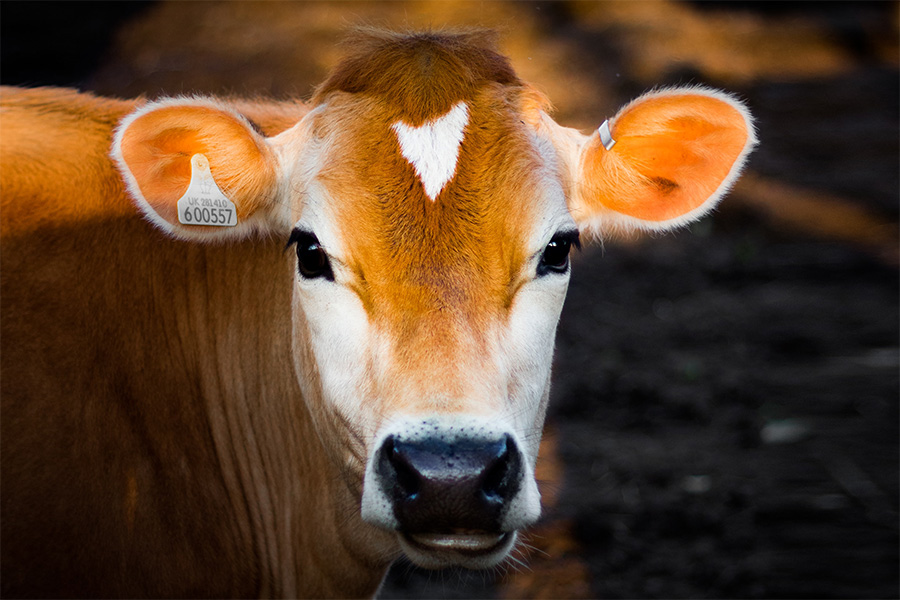Livestock identification plays a crucial role in managing a successful and organized cattle operation. Whether you’re a smallholder or a farmer running a large commercial farm, effective livestock identification using cow tags and/or other methods will help keep track of individual animals, foster maintenance of a healthy herd, facilitate proper record keeping, and ensure traceability if any of the cows decide to wander off.
The Basics of Cattle Livestock Identification Methods
There are several methods of cattle identification, ranging from traditional branding to more modern electronic identification systems. However, one of the most common and universally recognized methods is the use of ear tags.
At the low end, plastic cow tags, affixed to the ears, offer their own set of advantages and disadvantages in the realm of cattle identification. On the plus side, these tags are inexpensive, lightweight, and available in a variety of colors, making it easy to differentiate between animals. They are also less likely to cause discomfort or injury to the cattle, making them a more humane choice compared to metal tags.
Additionally, plastic ear tags can be inscribed with more information, and some types can even hold electronic components, similar to RFID chips. On the downside, however, plastic ear tags are more susceptible to environmental wear and tear; and over time they can fade, break, or become lost. Although cheaper to purchase initially, the potential need for frequent replacement may lead to higher material and labor costs in the long run.
What About RFID Cow Tags?
In recent years, there has been a shift toward electronic identification systems for livestock, particularly in larger operations. And one of the most popular choices is the use of RFID (Radio Frequency Identification) ear tags.
RFID ear tags provide a more efficient and accurate way of identifying cattle compared to traditional methods. Each RFID cow tag is encoded with a unique number that can be read by a handheld or stationary reader, making it easier to track individual animals throughout their lifetime. Unlike metal ear tags, RFID tags do not have to be physically seen or touched to be read, making data collection quicker and less invasive for the animals.
While RFID cow tags offer numerous benefits, there are some factors to consider before implementing them in your operation. First, they require specialized equipment and software for reading and storing data. This means a higher initial investment compared to traditional methods. Also, although RFID tags are more durable than plastic ear tags, they are still susceptible to damage or loss if not applied correctly. Regular maintenance of the equipment is also necessary to ensure accuracy and efficiency.
Spotlight on Metal Cow Tags
Metal ear tags are also a cost-effective, durable solution that has been used for decades. Made from sturdy materials that resist environmental wear and tear, these tags are often favored for their longevity. However, they come with their own set of challenges.
The Pros of Metal Cow Tags
Metal ear tags are strikingly resilient, easily withstanding harsh weather conditions. They are less likely to be lost or damaged compared to their plastic counterparts. Furthermore, they are relatively economical, a feature that adds to their appeal, especially for large-scale operations.
The Cons of Metal Cow Tags
Despite their benefits, metal ear tags are not without drawbacks. They can cause discomfort to the animal, particularly if not applied correctly. There’s also a risk of infection or injury at the application site, and some tags may rust over time, which can, in turn, impede readability.
Metal Cow Tag Application Best Practices
To ensure a seamless and safe application, it is essential to follow a few best practices. First, always clean the animal’s ear and sterilize the tag applicator before use to minimize the risk of infection. Position the tag correctly, typically in the middle of the ear, and away from major blood vessels to reduce discomfort. After application, monitor the cattle for signs of adverse reactions, such as swelling, infection, or unusual behavior.
Keep in mind that livestock identification is not just about labeling animals; it’s an essential aspect of responsible and sustainable cattle farming. By understanding the different methods available and implementing best practices, you can ensure efficient record-keeping, traceability, and ultimately, the success of your operation. So, take the time to evaluate your options and choose a reliable and appropriate method for identifying your cattle.
In conclusion, while high-tech alternatives, such as electronic identification systems, may be more appropriate in certain circumstances and should be considered as part of a comprehensive cattle management strategy, plastic or metal cow tags applied to the animal’s ear provide a reliable and cost-effective solution for cattle identification. Whatever the choice, it’s important to weigh the pros and cons and consider best practices for application. Ultimately, the key is to find a method that suits your specific operation and ensures the integrity of your herd’s identification.

at Ketchum Mfg. Co.







